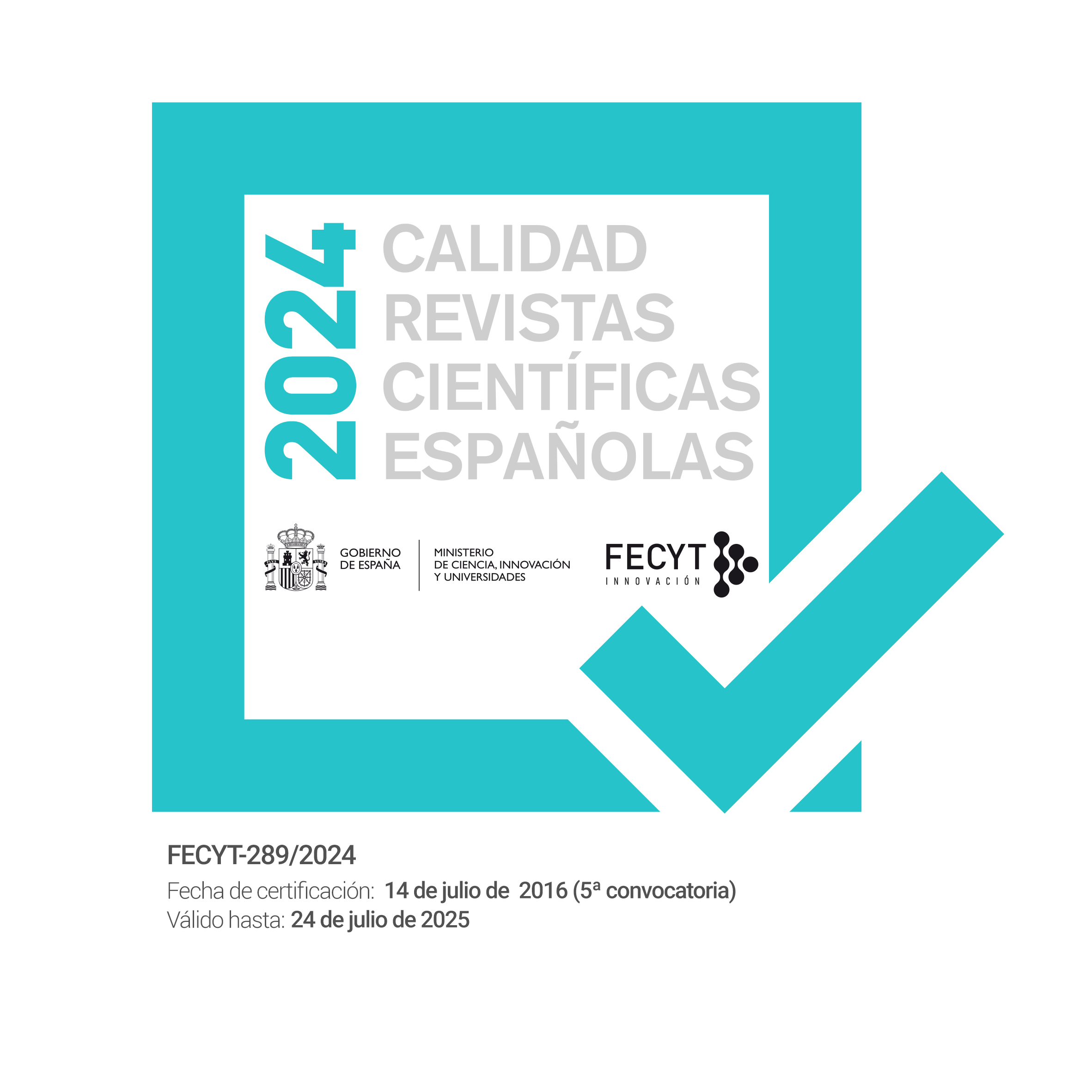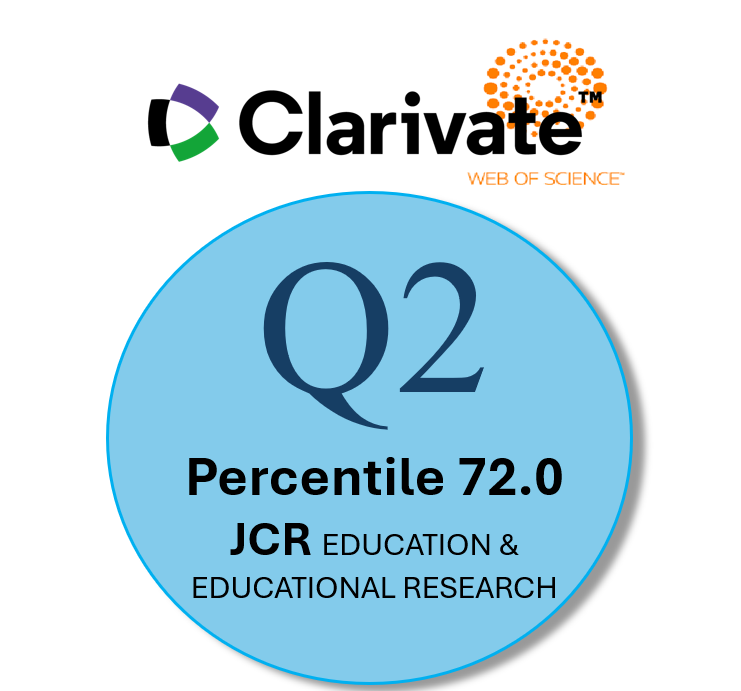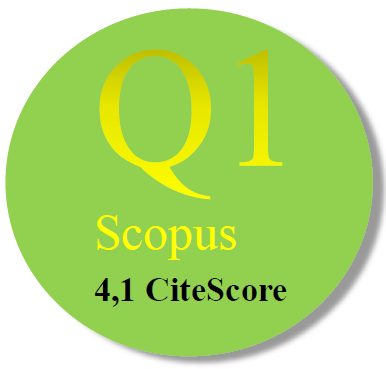Assessing the presence of the ‘Personal Learning Environment’ concept across the web domains of Spanish Higher Education institutions: a web mention study
Abstract
The concept of "Personal Learning Environment" (PLE) has attracted considerable levels of attention from researchers across various countries, most notably Spain. This study looks beyond the academic literature, examining the extent and ways in which the term is present in the web domains of Higher Education institutions in that country, with a special focus on universities. In order to do so, we conducted a web impact analysis querying the term in English and all the official languages in Spain (Catalan, Euskera, Galician and Spanish). Moreover, the complememented this with content analysis in order to gain insight into the context of use of the term. A handful of universities stand out because of a very high number of URLs, well above the average, mentioning the queried terms. We have explored commonalities and differences between those universities and also use content analysis to search for complementary indicators of attention and institutionalisation.
Downloads
-
Abstract700
-
PDF436
References
Attwell, G. (2007). Personal Learning Environments—The future of eLearning? ELearning Papers, 2(1), 1–8. http://somece2015.unam.mx/recursos/ACC/PLE_future_of_eLearning%20.pdf
Bar-Ilan, J. (2019). Data Collection From the Web for Informetric Purposes. In W. Glänzel, H. F. Moed, U. Schmoch, & M. Thelwall (Eds.), Springer Handbook of Science and Technology Indicators (pp. 781–800). Springer Verlag. https://link.springer.com/chapter/10.1007/978-3-030-02511-3_30
Carnoy, M., Jarillo, B., Castaño-Muñoz, B., Duart, J.M., Sancho Vinuesa, T. (2012). Who Attends and Completes Virtual Universities: The Case of the Open University of Catalonia (UOC). Higher Eduation, (63), pp. 53-82. https://link.springer.com/article/10.1007/s10734-011-9424-0
Castañeda, L., Tur, G., Torres-Kompen, R., & Attwell, G. (2022). The Influence of the Personal Learning Environment Concept in the Educational Research Field: A 2010-2020 Systematized Review. International Journal of Virtual and Personal Learning Environments (IJVPLE), 12(1), 1–16. https://doi.org/10.4018/IJVPLE.2022010102
Chan, T., Corlett, D., Sharples, M., Ting, J., & Westmancott, O. (2005). Developing interactive logbook: A personal learning environment. IEEE International Workshop on Wireless and Mobile Technologies in Education (WMTE’05), 73–75. https://doi.org/10.1109/WMTE.2005.16
Cybermetrics Lab - IPP-CSIC. (n.d.). Methodology. Ranking Web of Universities. Retrieved 4 June 2022, from https://www.webometrics.info/en/Methodology
Cybermetrics Lab - IPP-CSIC. (2022). Spain. Ranking Web of Universities. https://www.webometrics.info/en/Europe/Spain%20
Dabbagh, N., & Castañeda, L. The PLE as a framework for developing agency in lifelong learning. Education Tech Research Dev 68, 3041–3055 (2020). https://doi.org/10.1007/s11423-020-09831-z
Dabbagh, N., Kitsantas, A., Al-Freih, M., & Fake, H. (2015). Using social media to develop personal learning environments and self-regulated learning skills: A case study. International Journal of Social Media and Interactive Learning Environments, 3(3), 163–183. https://doi.org/10.1504/IJSMILE.2015.072300
Digital Methods Initiative. (2018, October 9). Lippmannian Device. https://wiki.digitalmethods.net/Dmi/LippmannianDevice
Drexler, W., 2010. The networked student model for construction of personal learning environments: Balancing teacher control and student autonomy. Australasian Journal of Educational Technology 26, 385, 369. http://www.ascilite.org.au/ajet/ajet26/drexler.html
European Commission. (2020). Digital Education Action Plan 2021-2027: Resetting education and training for the digital age. https://ec.europa.eu/education/education-in-the-eu/digital-education-action-plan_en
Gobierno de España. (2021). Universidades españolas, por tipo, presencialidad y ubicación. Clasificaciones Estadísticas Universitarias | Estadísticas - Ministerio de Universidades. https://www.universidades.gob.es/portal/site/universidades/menuitem.b96568fef1ce8b35c7d86f10026041a0/?vgnextoid=0a61372673680710VgnVCM1000001d04140aRCRD
Gobierno de España. (2022). Datos y cifras del Sistema Universitario Español. Publicación 2021-2022. Ministerio de Universidades. https://www.universidades.gob.es/stfls/universidades/Estadisticas/ficheros/DyC_2021_22.pdf
Gobierno de España Estadísticas - Ministerio de Universidades. (n.d.). Sistema Integrado de Información Universitaria. Retrieved 16 June 2022, from https://www.universidades.gob.es/portal/site/universidades/menuitem.78fe777017742d34e0acc310026041a0/?vgnextoid=719f372673680710VgnVCM1000001d04140aRCRD
JISC e-Learning Focus. (2004). Personal Learning Environment session notes1104: Notes from the Personal Learning Environments session held at the JISC/CETIS conference in Oxford in 2004. https://web.archive.org/web/20071021220907/http://www.elearning.ac.uk/resources/PLEsessionnotes.doc/view
Kuhn, C., 2017. Are students ready to (re)-design their personal learning environments? The case of the e-Dynamic.Space. Journal of New Approaches in Educational Research 6. https://doi.org/10.7821/naer.2017.1.185
Laakkonen, Ilona. (2015). Doing what we teach: promoting digital literacies for professional development through personal learning environments and participation. In Jalkanen, Juha; Jokinen, Elina; Taalas, Peppi (Eds), Voices of pedagogical development – expanding, enhancing and exploring higher education language learning (pp. 171-195). Research-publishing.net. https://doi.org/10.14705/rpnet.2015.000292
Martindale, T., & Dowdy, M. (2010). Personal Learning Environments. In G. Veletsianos (Ed.), Emerging technologies in distance education (pp. 177–193). AU Press, Athabasca University. https://central.bac-lac.gc.ca/.item?id=9781897425770&op=epub&app=Library
Rogers, R. (2010). Internet Research: The Question of Method—A Keynote Address from the YouTube and the 2008 Election Cycle in the United States Conference. Journal of Information Technology & Politics, 7(2–3), 241–260. https://doi.org/10.1080/19331681003753438
Schaffert, S., & Hilzensauer, W. (2008). On the way towards Personal Learning Environments: Seven crucial aspects. Elearning Papers, 9(2), 1–11. https://dialnet.unirioja.es/servlet/articulo?codigo=2937430
Stuart, D. (2014). Web Metrics for Library and Information Professionals. Facet. https://doi.org/10.29085/9781783300686
Thelwall, M. (2009). Introduction to Webometrics: Quantitative Web Research for the Social Sciences. Morgan & Claypool. https://doi.org/10.2200/S00176ED1V01Y200903ICR004
van Harmelen, M. (2006). Personal Learning Environments. Proceedings of the Sixth IEEE International Conference on Advanced Learning Technologies, 816, 815. https://web.archive.org/web/20070303110353id_/http://octette.cs.man.ac.uk:80/~mark/docs/MvH_PLEs_ICALT.pdf
Villar-Onrubia, D. (2014). The value of Web mentions as data: Mapping attention to the notion of OER in the HE arena. In M. Sánchez & E. Romero Frías (Eds.), Ciencias Sociales y Humanidades Digitales Técnicas, herramientas y experiencias de e-Research e investigación en colaboración (pp. 163–181). Sociedad Latina de Comunicación Social. http://www.cuadernosartesanos.org/2014/cac61.pdf
Wilson, S., Liber, O., Johnson, M., Beauvoir, P., Sharples, P., Milligan, C., & Others. (2006). Personal Learning Environments: Challenging the dominant design of educational systems. Proceedings of the First Joint International Workshop on Professional Learning, Competence Development and Knowledge Management-LOKMOL and L3NCD, Crete. http://ftp.informatik.rwth-aachen.de/Publications/CEUR-WS/Vol-213/paper28.pdf
Copyright (c) 2023 Distance Education Journal

This work is licensed under a Creative Commons Attribution-NonCommercial 4.0 International License.
Las obras que se publican en esta revista están sujetas a los siguientes términos:
1. El Servicio de Publicaciones de la Universidad de Murcia (la editorial) conserva los derechos patrimoniales (copyright) de las obras publicadas, y favorece y permite la reutilización de las mismas bajo la licencia de uso indicada en el punto 2.
2. Las obras se publican en la edición electrónica de la revista bajo una licencia Creative Commons Reconocimiento-NoComercial-SinObraDerivada 3.0 España (texto legal). Se pueden copiar, usar, difundir, transmitir y exponer públicamente, siempre que: i) se cite la autoría y la fuente original de su publicación (revista, editorial y URL de la obra); ii) no se usen para fines comerciales; iii) se mencione la existencia y especificaciones de esta licencia de uso.
3. Condiciones de auto-archivo. Se permite y se anima a los autores a difundir electrónicamente las versiones pre-print (versión antes de ser evaluada) y/o post-print (versión evaluada y aceptada para su publicación) de sus obras antes de su publicación, ya que favorece su circulación y difusión más temprana y con ello un posible aumento en su citación y alcance entre la comunidad académica. Color RoMEO: verde.













